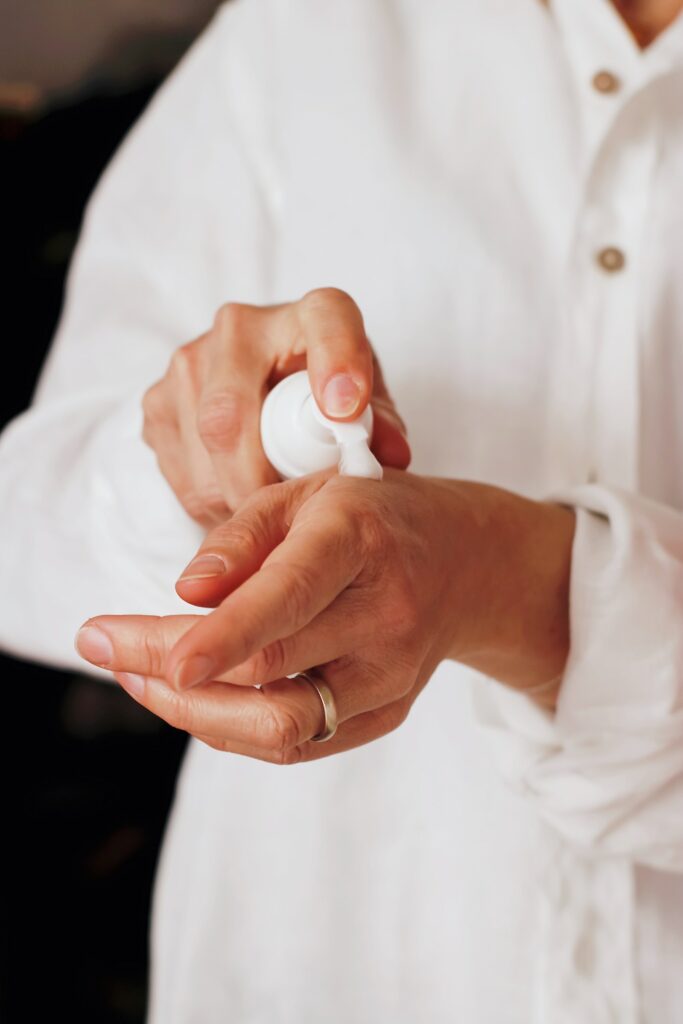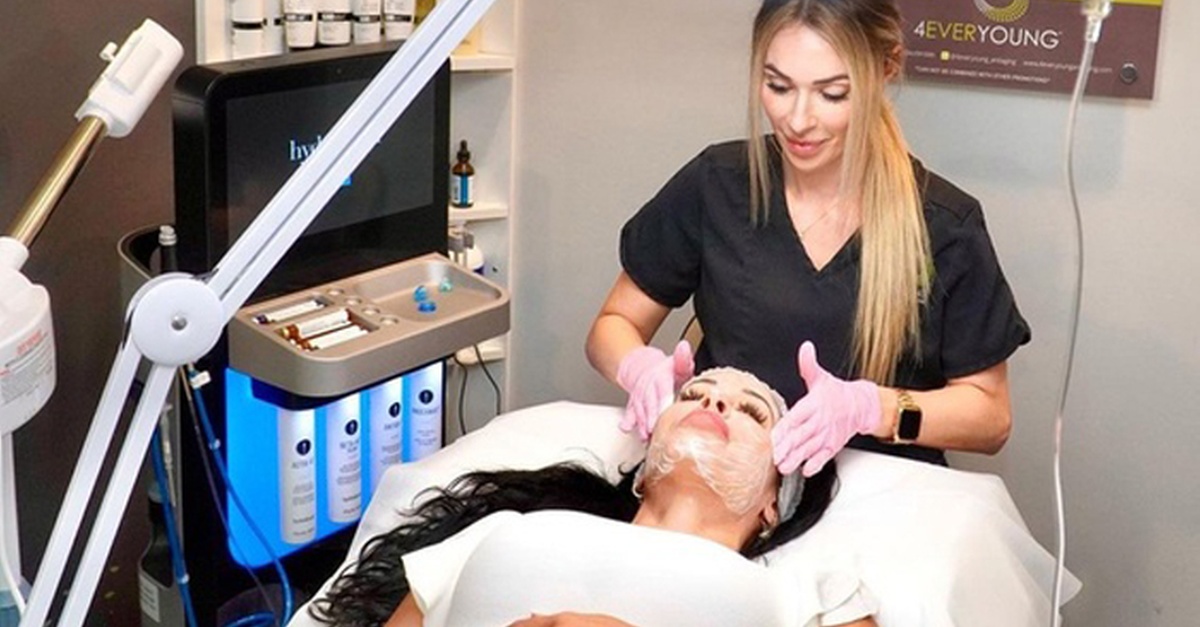
Skincare Adaptation for All Weather Conditions
Weather changes can have a significant impact on your skin’s health and appearance. To maintain a healthy, radiant complexion throughout the year, it’s essential to adapt your skincare routine to the specific needs of each season. By doing this, you’ll ensure your skin has the right nourishment and protection during various weather conditions, from summer’s heat and humidity to winter’s dry and cold temperatures.
Seasonal skincare adjustments can help prevent weather-related skin issues like dryness, oiliness, or breakouts. Choosing the appropriate products for each season allows you to address your skin’s unique requirements, whether it’s combating excess oil during warmer months or adding extra hydration during colder ones. Furthermore, thorough protection against the sun’s harmful rays is crucial all-year-round to prevent premature aging and skin damage.
Incorporating a seasonal skincare routine enables you to strike the right balance between optimal care and weather-related challenges. By tailoring your regimen to the climate and environmental factors, you’ll equip your skin with the essential tools to maintain a radiant, healthy glow throughout the year.
Understanding the Influence of Seasonal Changes
Temperature and Humidity
Changing seasons significantly impact our skin due to varying temperature, humidity, and other environmental factors. In warmer months, increased heat and humidity can lead to excess oil production and breakouts, while in colder months, dry air and indoor heating may cause dry, sensitive skin1.
Changes in Skin Needs
As the weather fluctuates, the needs of your skin also change. For instance, during summer months, radiant skin might require protection from increased sun exposure and sun damage. Incorporating a broad-spectrum sunscreen with at least SPF 30 into your daily routine is essential, especially when spending time outdoors2. On the other hand, cold weather and dry indoor air might make your skin more sensitive and prone to dryness. Adapting your skincare routine by using gentle cleansers and richer moisturizers can help combat these seasonal skin challenges3.
Environmental Factors
Apart from temperature and humidity, other environmental factors also influence skin health. In summer, increased sun exposure can lead to sun damage and photoaging, while cold winds in winter can further exacerbate skin dryness and sensitivity4. Ensuring that your skincare routine acknowledges and adapts to these seasonal changes is crucial for maintaining healthy, glowing skin all year round.
How to Adapt Your Skincare Routine for Fall and Winter
Moisture Retention and Hydration
During fall and winter, the cooler air and indoor heating can cause your skin to become dry and flaky. It’s essential to focus on moisture retention and hydration in your winter skincare routine. One way to achieve this is by using a richer moisturizer that contains hydrating ingredients like hyaluronic acid, shea butter, ceramides, and glycerin. These ingredients help lock in moisture and keep your skin hydrated throughout the day.
In addition to applying moisturizers, you can also support your skin’s hydration by adding a humidifier to your living space. A humidifier can help balance the dry indoor air and maintain a comfortable humidity level, which is beneficial for your skin.
Protection and Repair
Protecting your skin from the harsh winter elements involves more than just retaining moisture. Applying a broad-spectrum sunscreen with at least SPF 30 is crucial during the fall and winter seasons. Despite the lower temperatures and less intense sun, harmful UV rays can still penetrate and damage your skin. Regular use of sunscreen can help protect your skin and prevent premature aging.
Other ways to protect and repair your skin during the colder months include the application of healing balms on particularly dry or chapped areas. Balms can provide an extra layer of protection against harsh weather conditions while also promoting skin repair.
In conclusion, adapting your skincare routine for fall and winter involves focusing on moisture retention and hydration, as well as protection and repair. By incorporating moisturizing ingredients, humidifiers, sunscreen, and healing balms into your regimen, you can maintain a healthy and glowing complexion throughout the colder seasons.
How to Adapt Your Skincare Routine for Spring and Summer
Cleansing and Exfoliation
During spring and summer, it’s crucial to adjust your skincare routine to accommodate the warmer weather. Start by selecting a gentle cleanser that will effectively remove any impurities without irritating your skin. Exfoliating is particularly important during these seasons as it helps to eliminate dead skin cells, which can accumulate due to increased sweat and oil production. Consider using a chemical exfoliant containing AHAs or BHAs as they’re less abrasive and more suitable for warmer months. Regular exfoliation will leave your skin looking fresh and ready for the new season.
Sun Protection and Oil Control
Sunscreen is an essential part of spring and summer skincare routines, as increased sun exposure can lead to skin damage and premature aging. Choose a broad-spectrum sunscreen with a high SPF to protect your skin from both UVA and UVB rays. Furthermore, to control excess oil production, opt for an oil-free or lightweight moisturizer. This will keep your skin hydrated without clogging pores or causing breakouts. Non-comedogenic products are another wise choice, as they won’t contribute to acne or other skin issues during the warm months.
Nourishment and Radiance
Maintaining a radiant complexion in spring and summer begins with the right nourishment. Incorporate serums with active ingredients like vitamin C, niacinamide, and antioxidants into your skincare routine. Vitamin C brightens the skin and provides protection against environmental stressors, while niacinamide helps to reduce inflammation and strengthen the skin’s barrier. Antioxidants fight off free radicals and promote a healthy glow.
Don’t shy away from using facial oils during the warmer seasons: some natural oils, like argan and rosehip seed oil, help to balance oil production rather than exacerbate it. They contain essential fatty acids and vitamins that support overall skin health, keeping your complexion balanced and radiant throughout spring and summer.

Choosing the Right Skincare Products
Understanding Product Ingredients
When choosing skincare products, it’s essential to understand the ingredients and their benefits. For optimal skin health, look for products containing hyaluronic acid, vitamin C, BHAs, AHAs, antioxidants, niacinamide, ceramides, and glycerin. These ingredients can address various skin concerns, such as dryness, oiliness, or sensitivity.
Hyaluronic acid and glycerin are hydrating ingredients that help retain moisture in the skin, while ceramides strengthen the skin barrier. Vitamin C, niacinamide, and antioxidants combat aging signs and protect the skin from environmental stressors. BHAs and AHAs exfoliate the skin, revealing a radiant complexion.
Aligning Products with Skin Types
It’s crucial to choose skincare products that align with your skin type. For dry skin, opt for products with nourishing and hydrating ingredients like ceramides and hyaluronic acid, which can help replenish moisture.
Oily skin benefits from lightweight, oil-free moisturizers and non-comedogenic products that won’t clog pores. Individuals with sensitive skin should look for fragrance-free and hypoallergenic options to avoid irritation.
| Skin Type | Ingredient Recommendations |
|---|---|
| Dry Skin | Hyaluronic Acid, Ceramides, Glycerin |
| Oily Skin | Oil-free Moisturizers, Non-comedogenic |
| Sensitive | Fragrance-free, Hypoallergenic |
The Importance of SPF
SPF (Sun Protection Factor) is a critical component of any skincare routine. Sun damage can accelerate aging and cause hyperpigmentation or even skin cancer. Therefore, protecting the skin from harmful UV rays is essential for maintaining a healthy and youthful appearance.
Choose a broad-spectrum sunscreen with at least SPF 30 to ensure adequate protection against both UVA and UVB rays. Apply sunscreen daily, even on cloudy days, as UV rays can penetrate clouds and still cause sun damage. Additionally, consider using products like moisturizers and serums with added SPF for an extra layer of protection in your skincare routine.
Additional Considerations for Seasonal Skincare
Lip Care in Cold Weather
During cold weather, it’s crucial to give extra attention to your lips. Chapping can be a common issue, causing discomfort and affecting your overall appearance. To prevent chapped lips, incorporate a good-quality lip balm into your skincare routine. This helps maintain moisture levels and prevent dryness.
Addressing Specific Skin Concerns
Seasonal changes can accentuate certain skin concerns like dullness, sensitivity, and breakouts. To counter dullness, consider incorporating a moisturizing cleanser with alpha-hydroxy acids (AHAs) to gently exfoliate the skin, revealing a brighter complexion. For those with sensitive skin, opt for mild, fragrance-free lotions and creams to avoid irritation. In the case of breakouts, using a soothing face mask with anti-inflammatory properties can help manage acne-prone skin.
The Role of Nutrition and Hydration
Maintaining a healthy diet is vital for achieving a year-round glow. Proper nutrition not only impacts your overall health but also plays a significant role in achieving healthy skin. Consuming a balanced diet rich in vitamins, minerals, and antioxidants can help prevent premature aging and promote skin health. Staying hydrated is also essential for maintaining skin elasticity and preventing dryness. Make a conscious effort to drink water throughout the day to keep your skin nourished and refreshed.
Understanding the Importance of Using Toner
Incorporating toner into your seasonal skincare routine helps balance your skin’s pH levels and enhances the effectiveness of other skincare products. Toners can remove any lingering impurities and provide an additional layer of protection against environmental pollutants. Choose a toner based on your skin type and specific concerns, such as acne control or hydration. By consistently using a toner, you’ll notice improvements in your skin’s overall appearance and texture.
Conclusion
Achieving a glowing skin and radiant complexion requires adapting your skincare routine to the ever-changing weather conditions. By making appropriate changes throughout the year, you can maintain a healthy and beautiful skin regardless of the climate.
One key element to consider is choosing the right moisturizer for each season. In warmer months, a gel-based moisturizer can provide lightweight hydration that doesn’t clog your pores. On the other hand, facial oils and richer creams may be more suitable for colder weather, where skin can become dry and parched.
It’s essential to keep in mind that your skincare routine should not only change based on the temperature but also the other elements that each season brings. For instance, increased humidity during summer can lead to excess oil production, while harsh winds during winter can strip away your skin’s natural moisture barrier. By adapting and adjusting the products you use, you can combat these concerns and maintain a year-round glow.
In summary, a careful and deliberate approach to seasonal skincare can lead you to a radiant complexion throughout the entire year. By switching to suitable products in response to fluctuating weather conditions, you can ensure that your skin remains healthy, glowing, and beautiful, no matter the climate.

